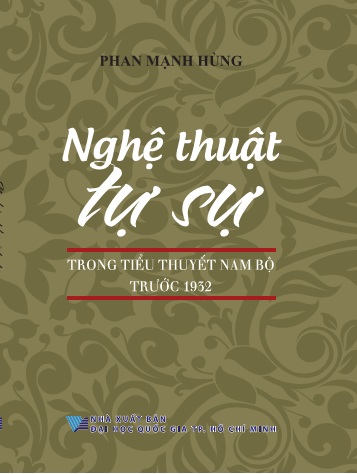
(Summary)
Research Focuses and Expectations:
The studies the narrative art - the art of telling a story - in novels published in Southern Vietnam during the late nineteenth and the early twentieth centuries. With the aims of sketching up the formation and movement of Vietnamese novels under the influences from both the Eastern and Western literatures, the thesis focuses on the following points:
- Introduction to literary theories on novels and narrative art and to the history of Southern novels;
- Narrative art in Southern novels from the perspectives of narrative construction, characters, and discourse structure.
Research Methods:
The research is carried on with the following methods: typology, systematicalization, historical poetics (which focuses on classical theories of narration), inter-filed research.
Research Results:
The research has come to following conclusions:
Novels in Southern Vietnam before 1932 were in rapid modernisation. They were published mostly on newspapers and magazines, and were read mainly by mass, non-expert readers. Authors of those novels were under great influences both from the East with Confucianism and Chinese pre-modern chapter novels and from the West with French novels of the eighteenth and nineteenth centuries.
All those influences created a synthetic writing style. Studying deeply into the texts, the author of the thesis has drawn out some characteristics of narrative art in Southern novels from the late nineteenth century to 1932 as followed:
- Narrative structure: linear and non-linear;
- Narrating character: the character who knows everything or not knows everything of the story. The emergence of novels that were told from the first-person narrator made a great movement in novel types: from those focusing on incidents to those focusing on characters;
- The narration of the narrating character and the image of the listening character enabled the movement of the content from outside to inside the text;
- Character types: mostly acting characters;
- Themes: patriotism, and issues about individuals within the crash between the Eastern and Western cultures in a capitalized colony;
- Language of characters: The four languages Vietnamese, Chinese, Khmer, and French were used synthetically. Language of characters was gradually individualized and differentiated from narrator discourses. There was the appearance of the semi-direct speech, which, at that time, was a very efficient mean to discover the inner world of characters.
- Sub-genres: historical novel, detective novel, novel of Eastern knights, social and moral novel, custom novel,… Detective novel was the leader in innovation with the non-linear structure and profound description of characters’ psychology.
Scientific and Practical Significance of Research:
With the conclusions above, the research “Narrative Art in Southern Novels before 1932” can be:
- an inspiring suggestion to applying theories of narration studies in studying Vietnamese literature.
a helpful reference for teaching Southern novels in the course of Southern literature in both the undergraduate and postgraduate programs.
